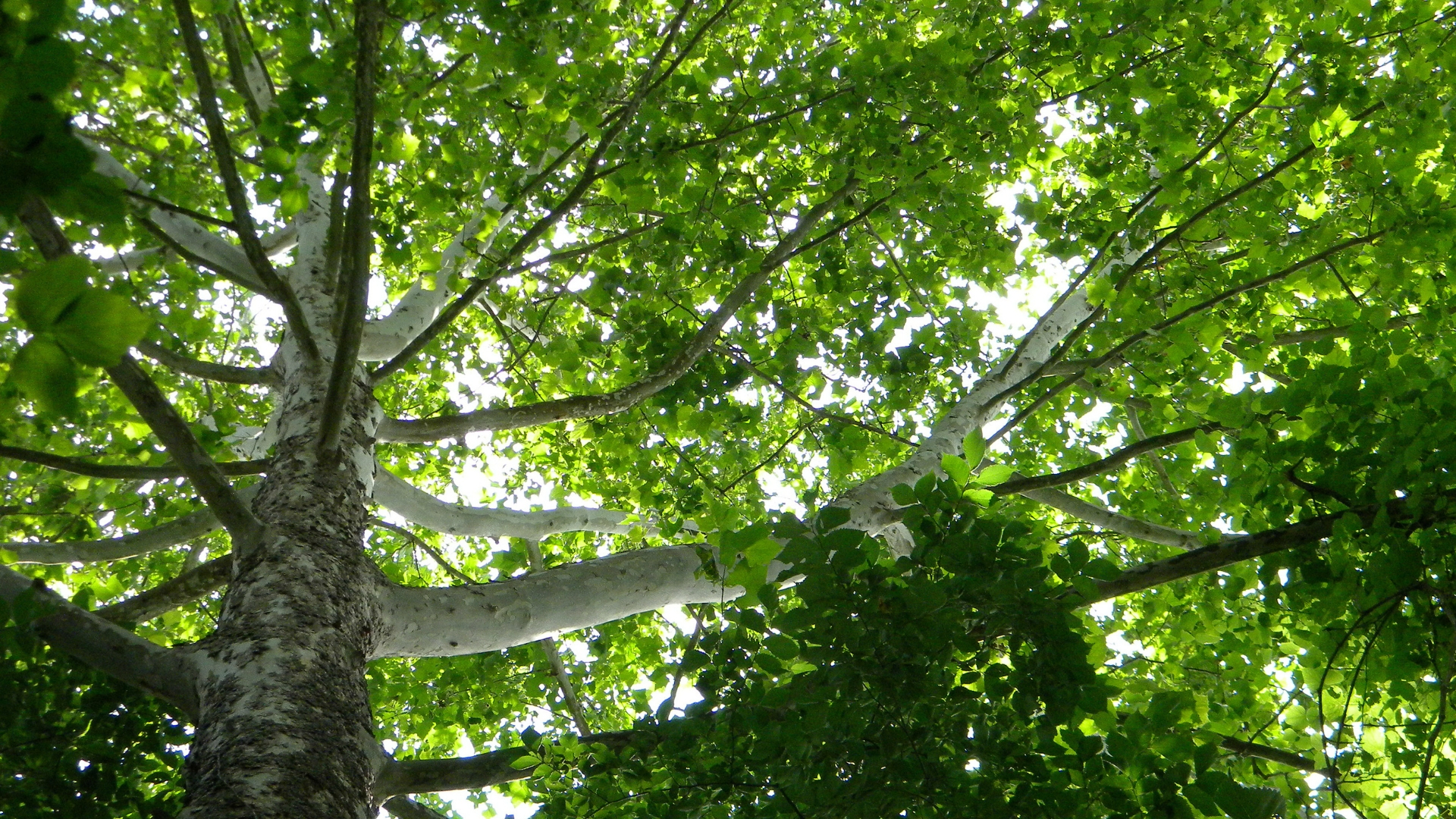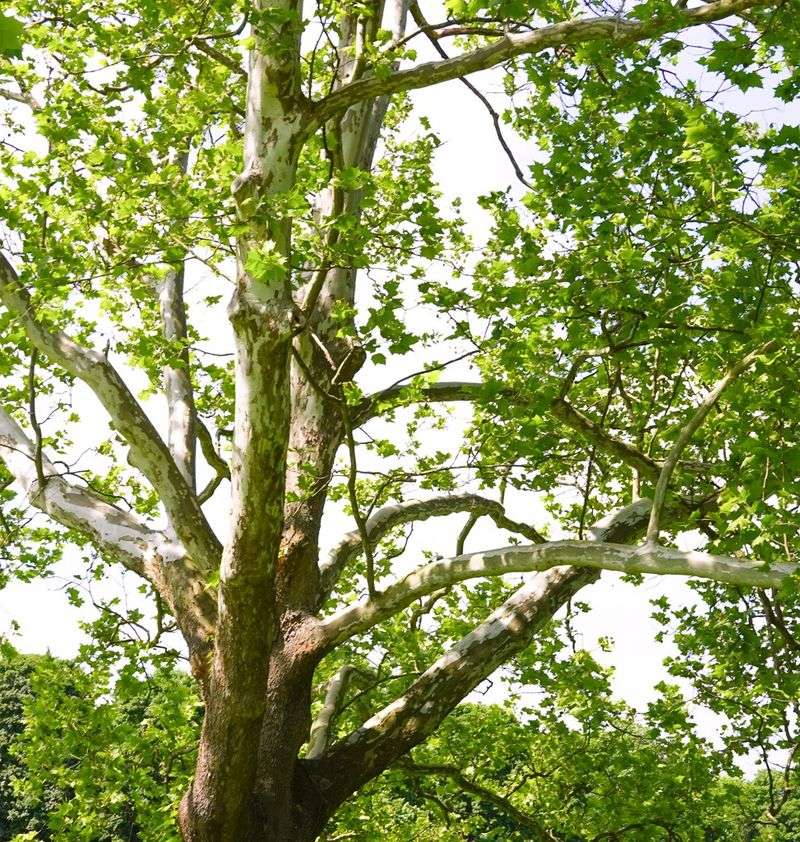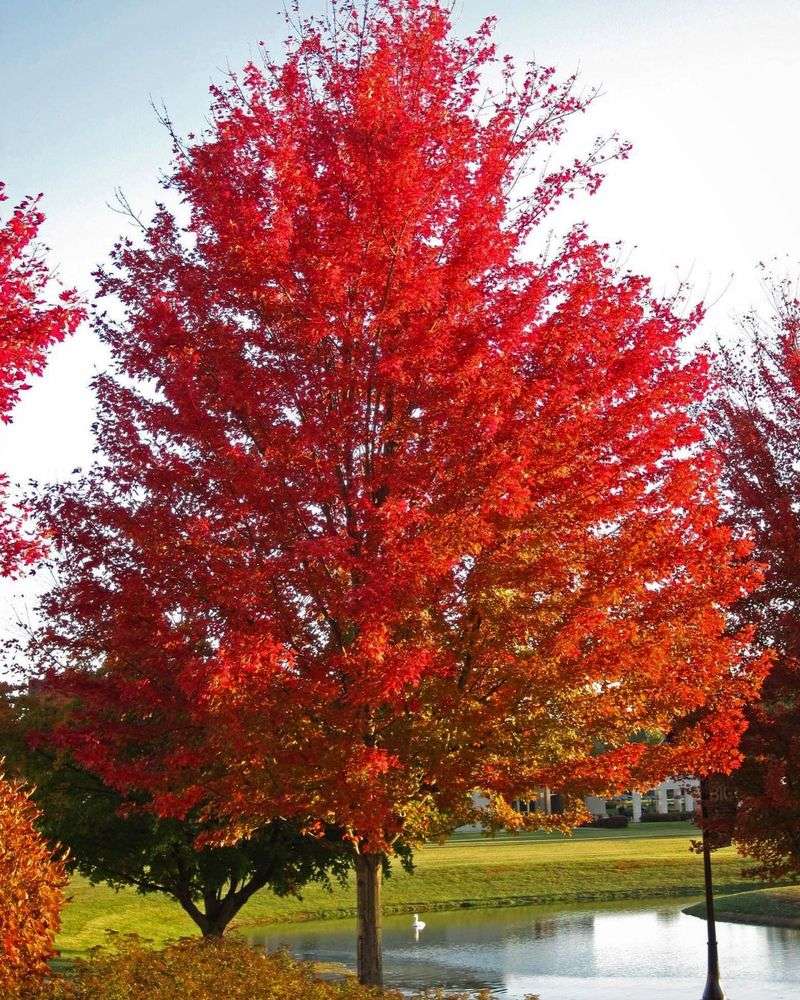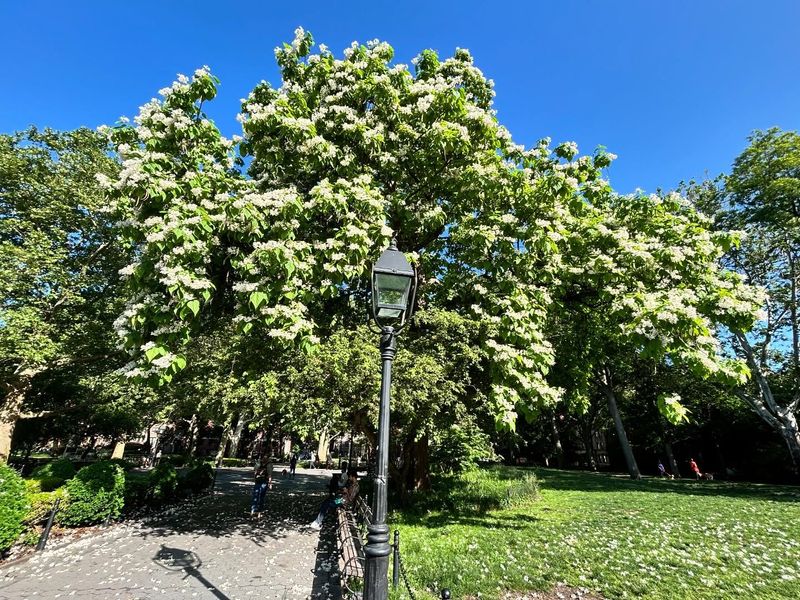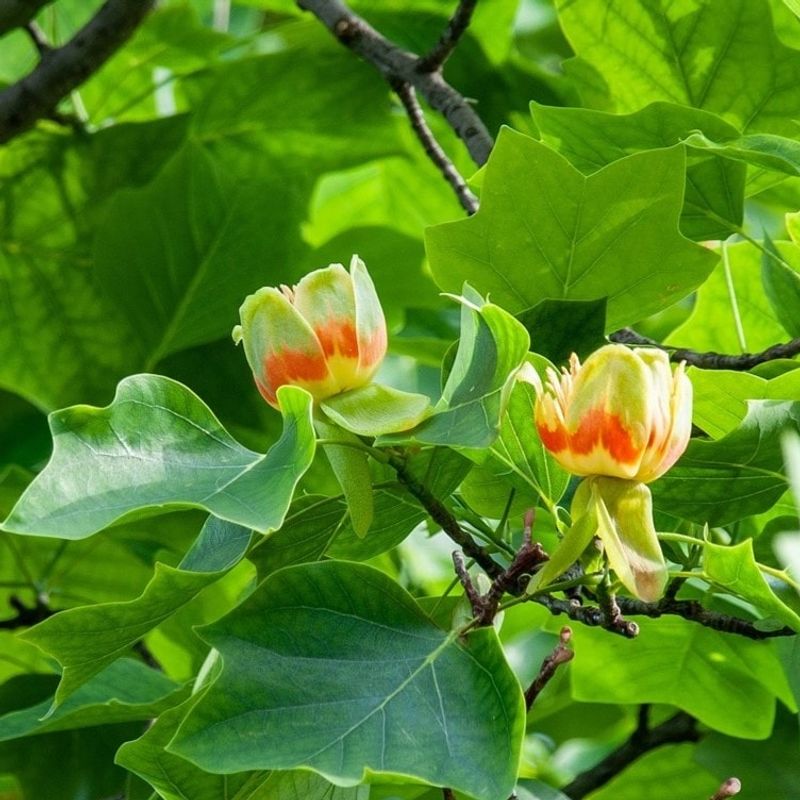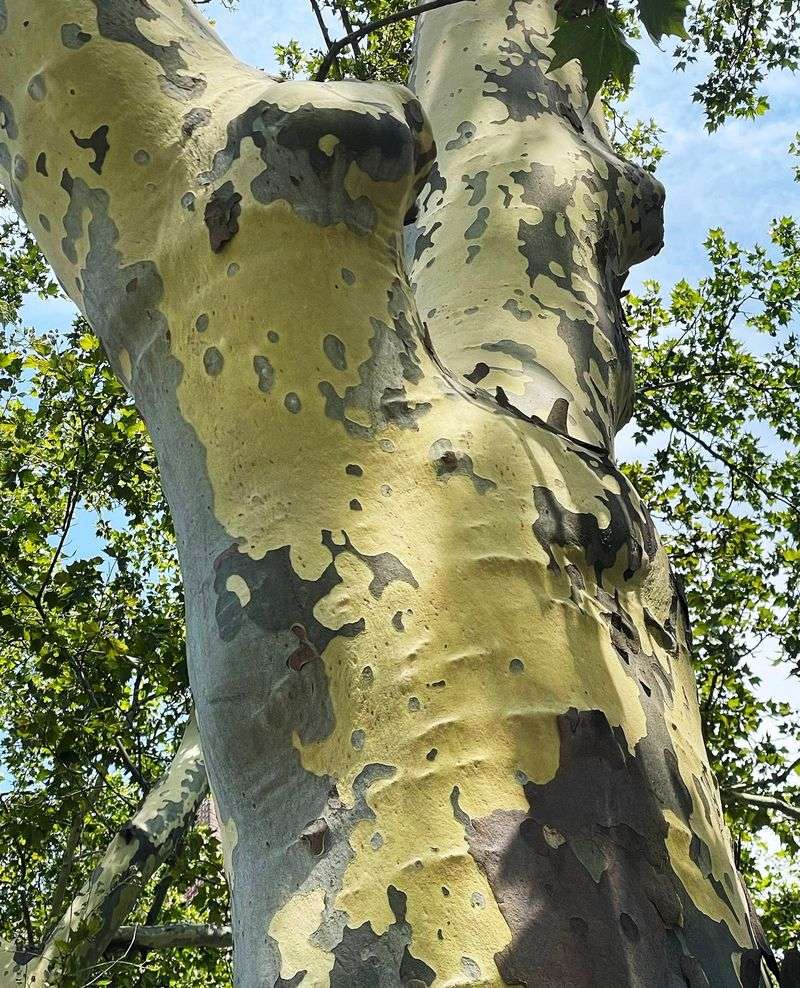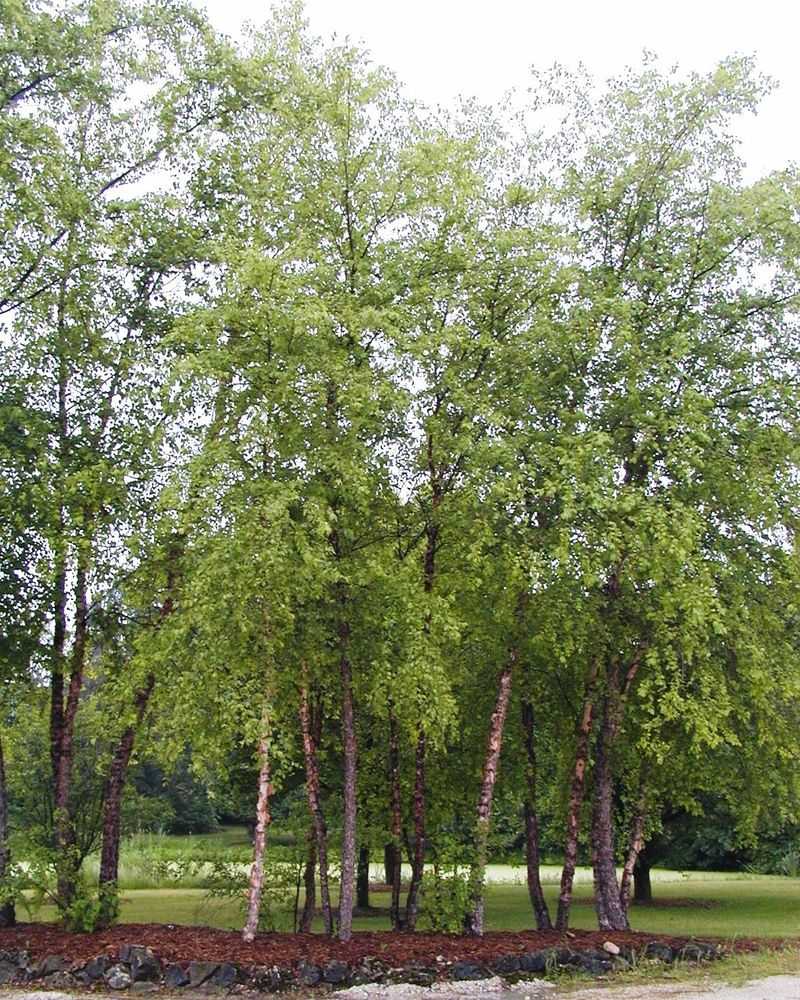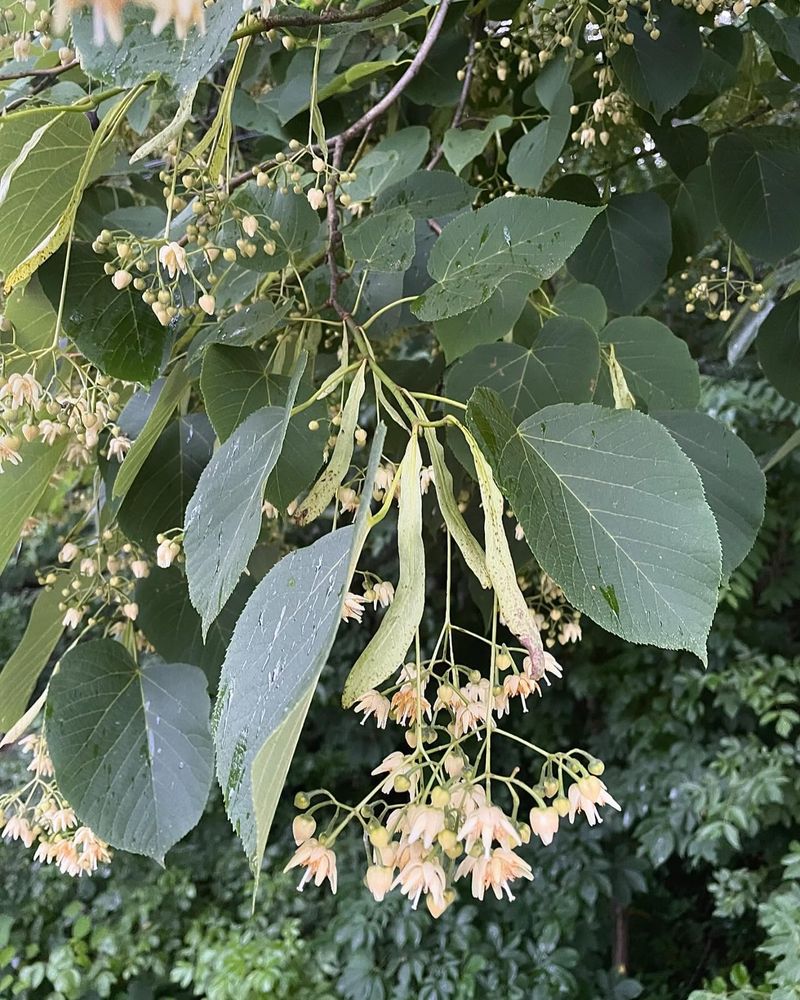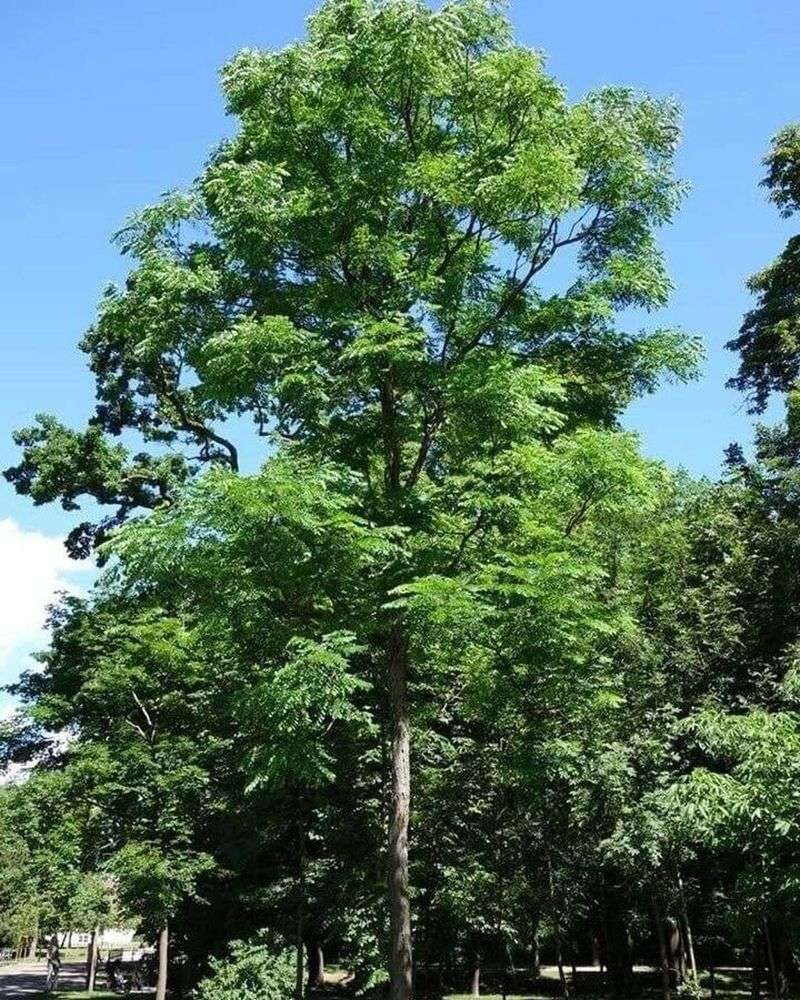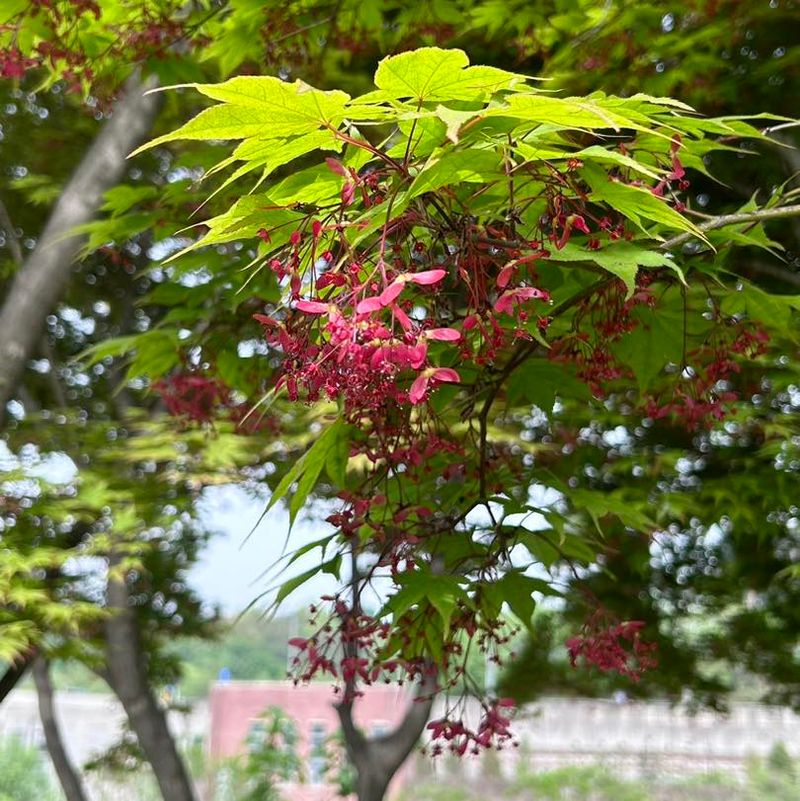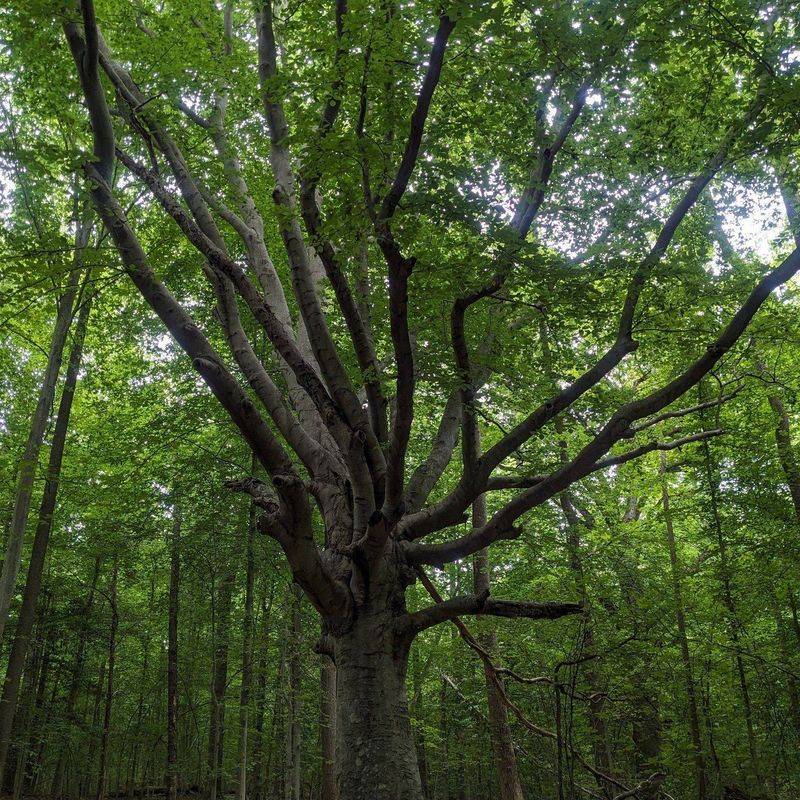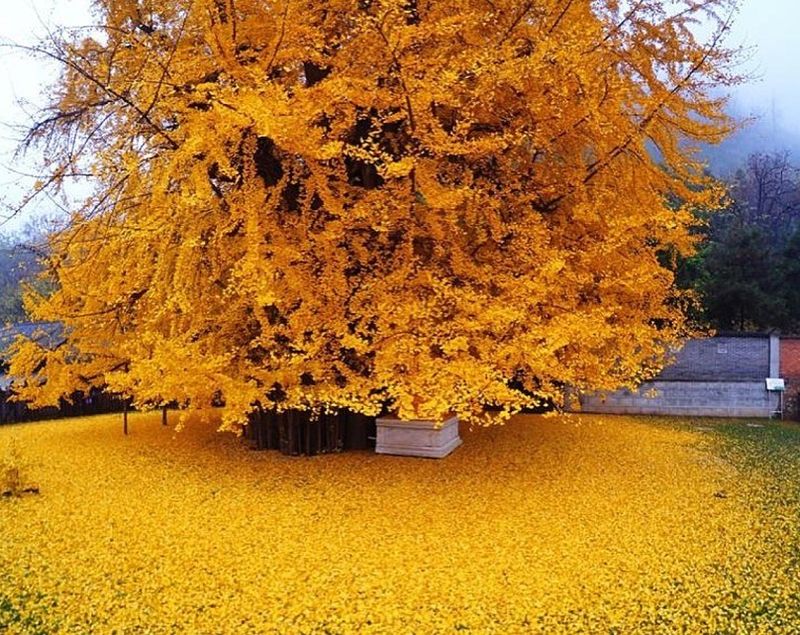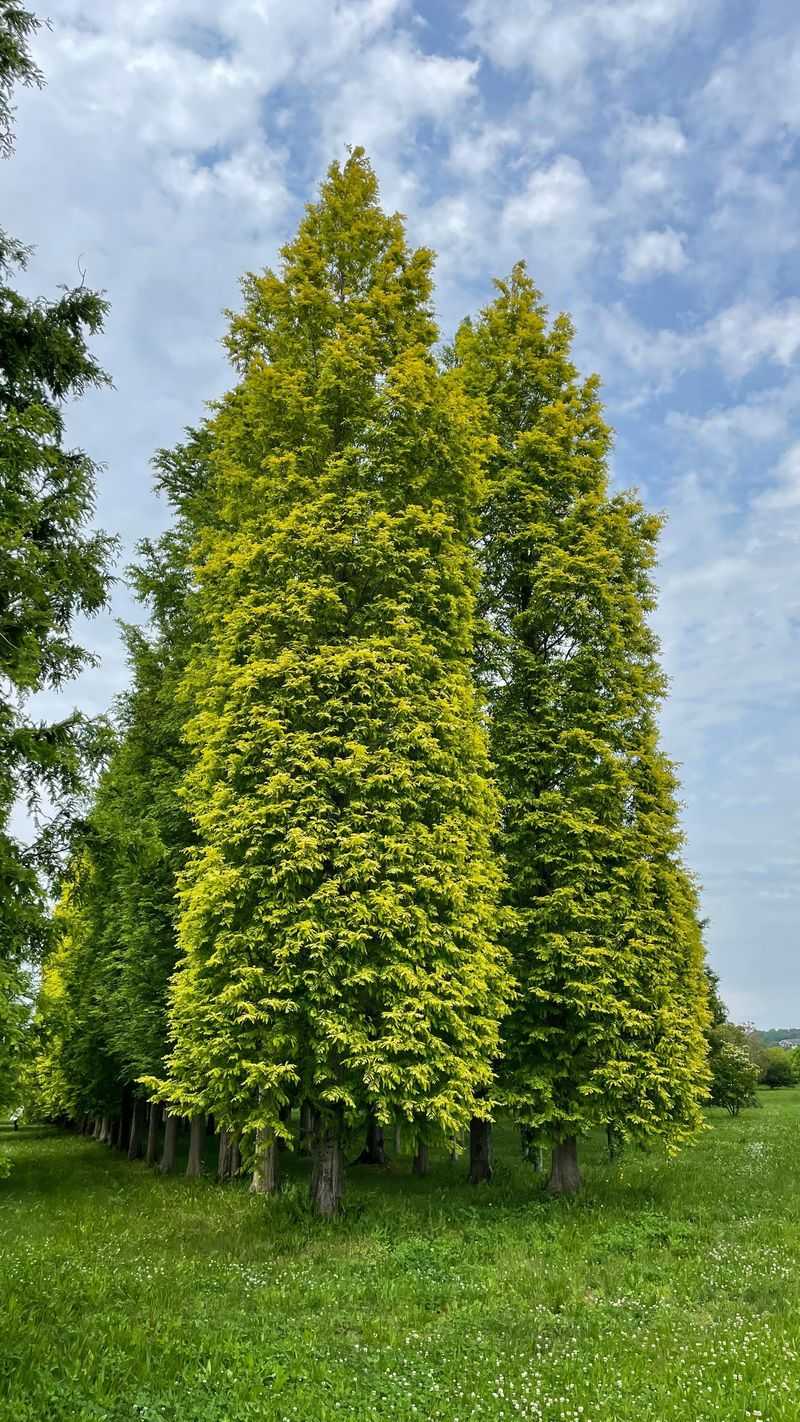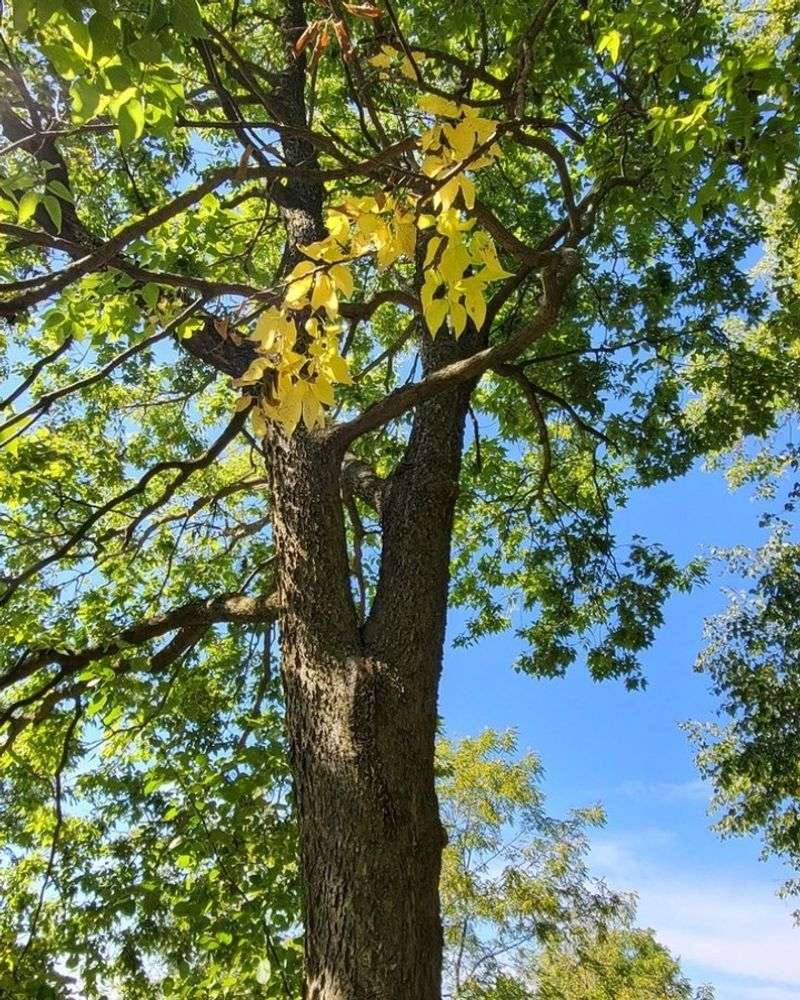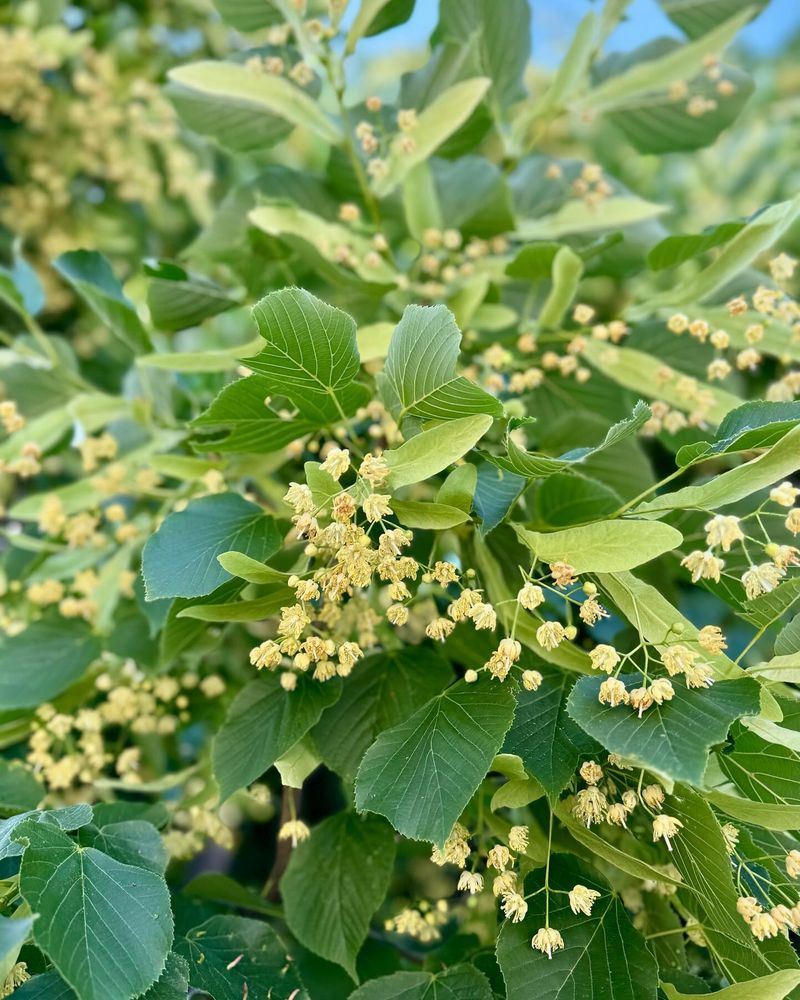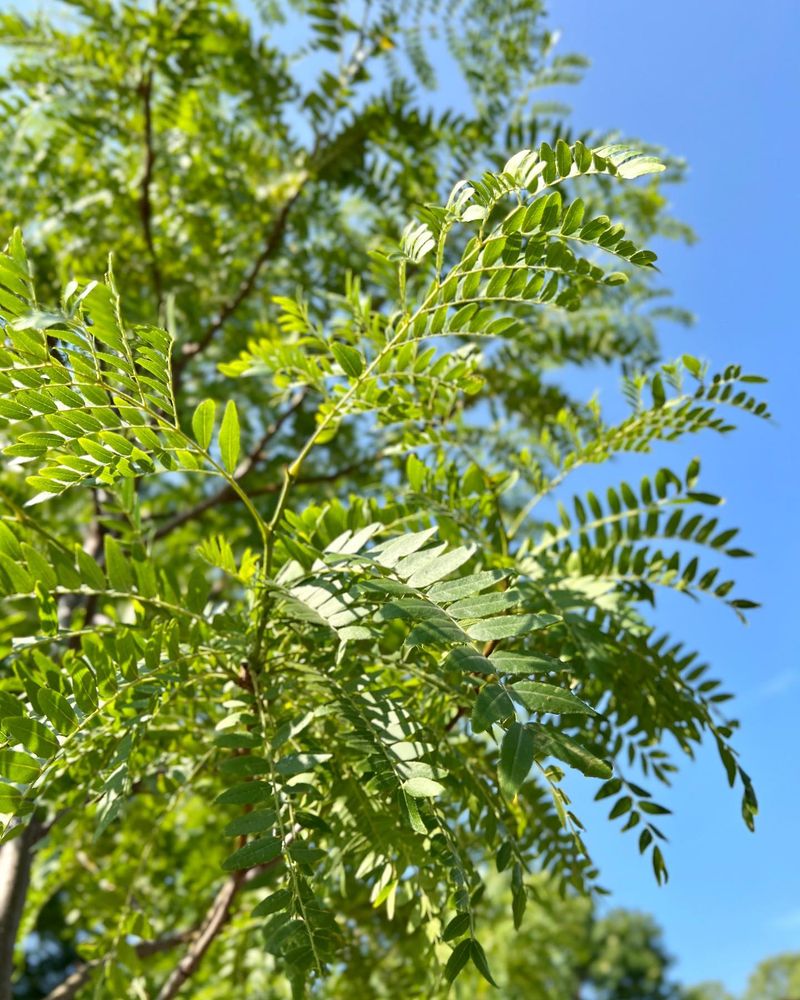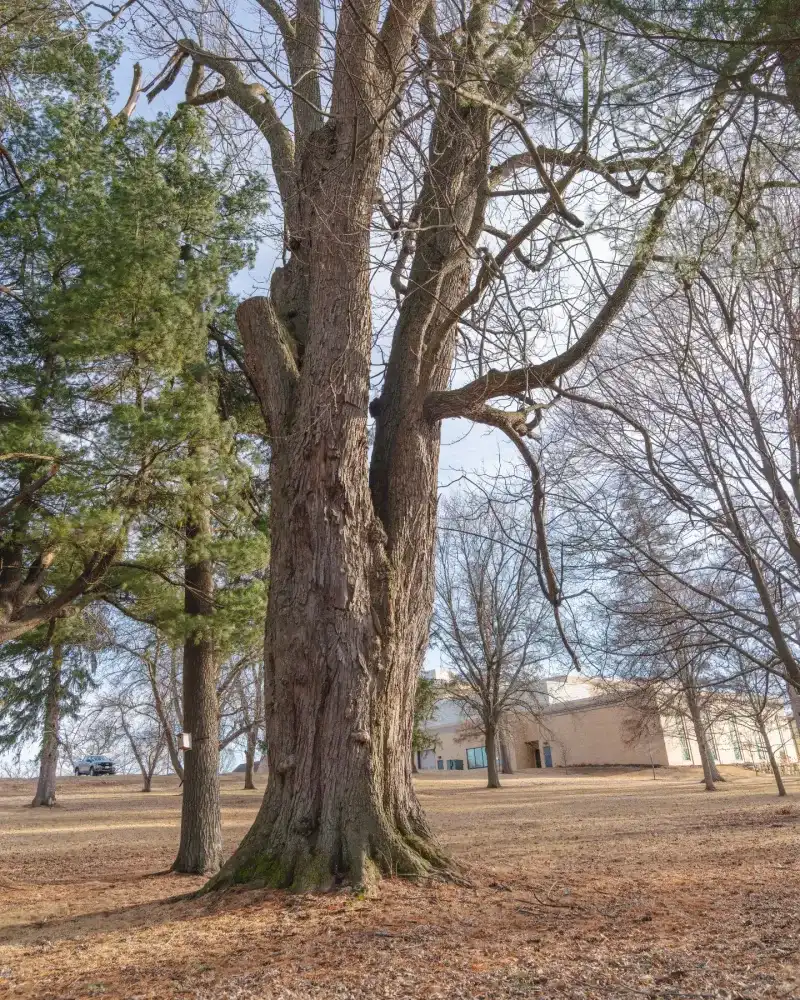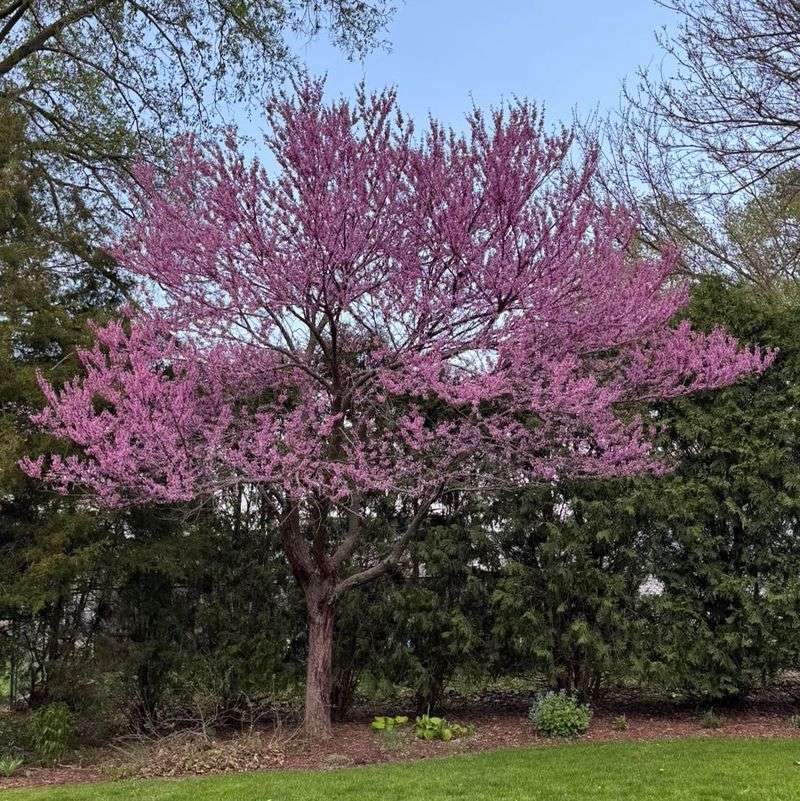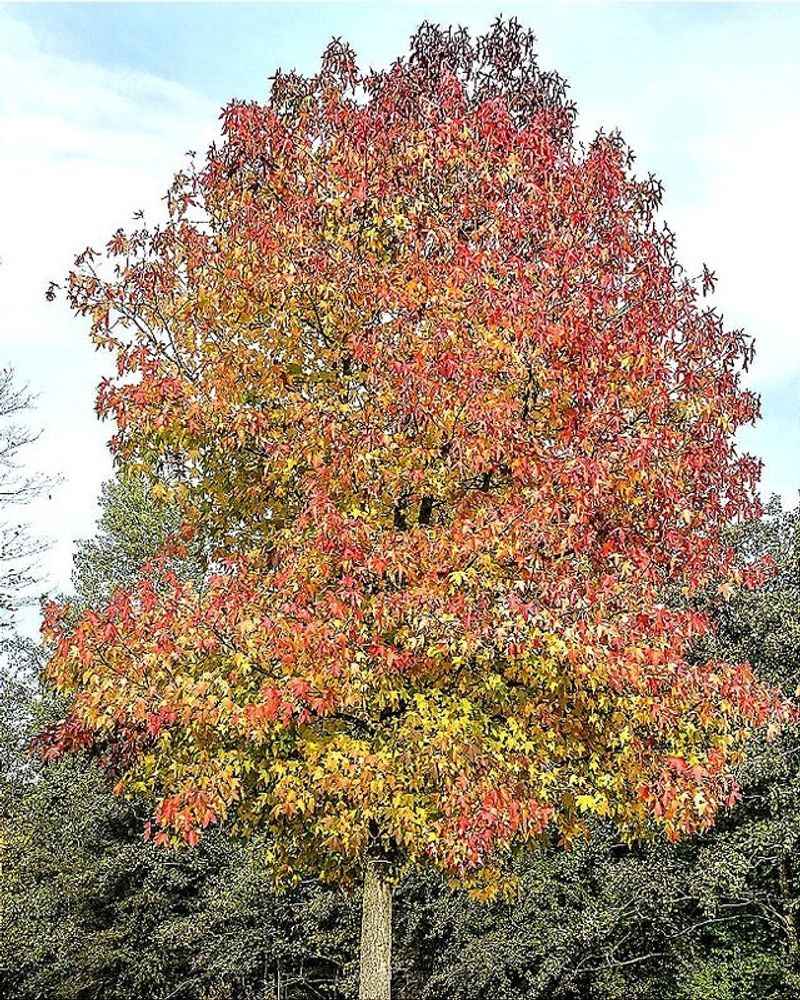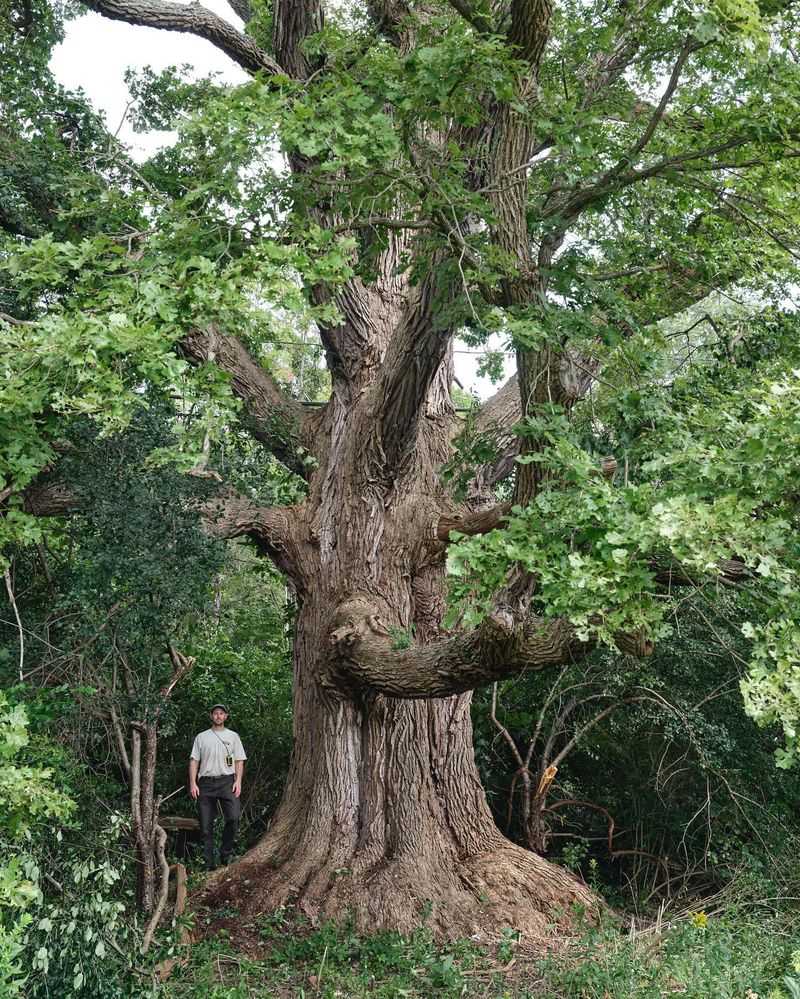There’s nothing better than relaxing under a shady tree on a hot summer day—I speak from experience. If your yard feels like an oven once the sun’s out, planting the right tree now can make a world of difference.
I’ve found some fast-growing, low-fuss options that bring serious cooling power. Plus, they make your whole outdoor space feel more peaceful and inviting.
Let’s find the perfect leafy companion to keep things cool when the heat hits.
1. American Sycamore
Few trees make a statement like the majestic American Sycamore with its distinctive mottled bark that peels to reveal creamy patches underneath. Growing up to 100 feet tall, these giants create vast pools of shade perfect for large properties.
Their massive leaves form a dense canopy that blocks intense summer rays. Hardy and long-lived, sycamores can survive for hundreds of years, making them a legacy planting for future generations.
2. Red Maple
Vibrant and versatile, red maples adapt to various soil conditions while providing excellent shade coverage for medium-sized yards. Their name comes from their brilliant fall display, but their summer shade value is equally impressive.
Growing at a moderate rate of about 1-2 feet per year, you won’t wait decades for cooling benefits. Native to eastern North America, these beauties support local wildlife while keeping your outdoor spaces comfortable during scorching summer days.
3. Northern Catalpa
Looking for quick shade with a touch of drama? Northern Catalpa delivers with heart-shaped leaves spanning up to 12 inches across. During early summer, these remarkable trees produce clusters of showy white flowers resembling orchids.
Fast-growing and heat-tolerant, catalpas quickly develop into shade powerhouses with broad, spreading canopies. Their unique bean-like seed pods, sometimes reaching 20 inches long, add winter interest after the cooling summer shade season ends.
4. Tulip Poplar
Reaching skyward with remarkable speed, tulip poplars combine fast growth with magnificent height—often exceeding 90 feet. The distinctive tulip-shaped leaves create a dense canopy that filters sunlight into a gentle, dappled pattern below.
Yellow-green flowers adorning the upper branches in late spring add to this tree’s appeal. Despite its size, the tulip poplar has a relatively narrow spread, making it suitable for properties where width might be limited but vertical space abounds.
5. London Planetree
Urban environments present challenges for many trees, but the London Planetree thrives where others falter. Remarkably resistant to air pollution, compacted soil, and drought, this hybrid has become a city planning favorite for good reason.
The attractive exfoliating bark peels in patches to reveal creamy inner layers. Growing to impressive heights while developing a broad, rounded crown, these tough beauties create cooling shade islands in concrete jungles where temperature relief is most needed.
6. Pin Oak
With its distinctive pyramidal shape and deeply lobed leaves, the pin oak creates a formal yet functional shade profile. Unlike some oaks that take generations to mature, pin oaks grow at a surprisingly brisk pace of 1-2 feet annually.
Their strong central leader and horizontal branching pattern create reliable shade without the sprawling width of some shade trees. Autumn brings an added bonus as the foliage transforms into deep scarlet hues before winter dormancy.
7. River Birch
Graceful and eye-catching, river birches sport exfoliating cinnamon-colored bark that curls and peels in thin layers. Often planted in multi-trunk clusters, they create artistic focal points while providing medium-density shade perfect for gardens that need filtered light.
Heat-tolerant and resistant to the bronze birch borer that plagues other birch varieties, river birches thrive in both wet and dry conditions. Their diamond-shaped leaves flutter in the slightest breeze, adding movement and gentle rustling sounds to your summer shade retreat.
8. American Basswood
Sweet fragrance wafts through the air when American basswoods bloom in early summer, attracting bees that produce prized basswood honey. The heart-shaped leaves can reach an impressive 8 inches across, creating a dense shade canopy that significantly drops temperatures below.
Native to eastern woodlands, these generous shade-makers develop rounded crowns that spread 50-80 feet wide at maturity. Their soft, pale wood has historically been used for hand carving, while their cooling shade has been appreciated for centuries.
9. Kentucky Coffeetree
Rugged and architectural, the Kentucky coffeetree offers four-season interest alongside its excellent summer shade. The unique bipinnate leaves create a filtered, almost tropical-looking canopy that allows just enough light through for shade-tolerant plants below.
Winter reveals striking silhouettes with chunky branches and persistent seed pods resembling leather shoes. Pollution-resistant and adaptable to urban conditions, these uncommon natives deserve wider recognition for their combination of beauty, drought tolerance, and cooling capabilities.
10. Japanese Zelkova
Reminiscent of the classic American elm without the susceptibility to Dutch elm disease, Japanese zelkovas offer vase-shaped elegance and reliable shade. Their finely serrated leaves create a dense canopy that casts cool, even shade across patios and play areas.
Fall brings spectacular orange-red color before the leaves drop to reveal graceful branching patterns. Tough enough for street plantings yet refined enough for showcase positions, these adaptable trees reach 50-80 feet tall while maintaining a manageable spread of 40-50 feet.
11. American Beech
Smooth, silver-gray bark distinguishes the stately American beech, creating winter interest long after its summer shade duties end. The dense, horizontal branching structure creates some of the deepest shade of any deciduous tree—perfect for those seeking maximum cooling effect.
Beech leaves hold on well into winter, first turning golden bronze then fading to paper-like tan. Though slow-growing, the patience required is rewarded with a magnificent specimen that can live for centuries, providing generational shade and increasing in beauty with age.
12. Ginkgo Biloba
Living fossils in the landscape, ginkgos have remained essentially unchanged for over 200 million years. Their distinctive fan-shaped leaves create medium-density shade that turns brilliant yellow in fall before dropping almost simultaneously—often in a single day!
Incredibly pollution-tolerant and resistant to pests and diseases, these ancient wonders make ideal urban shade trees. Choose male cultivars to avoid the unpleasant smell of fruit from female trees, and enjoy a low-maintenance shade solution that can live for over a thousand years.
13. Dawn Redwood
Once thought extinct and known only through fossils, the dawn redwood was rediscovered growing in a remote Chinese valley in the 1940s. Unlike most conifers, these living relics drop their feathery needles in winter after they turn russet-orange in fall.
Growing rapidly to heights of 70-100 feet, they quickly provide significant shade with a conical form that works well in larger landscapes. Their soft, fern-like foliage creates gentle, filtered shade perfect for cooling large areas without completely blocking sunlight.
14. Hackberry
Underappreciated but incredibly tough, hackberries thrive where other trees struggle while providing excellent broad shade. Their slightly asymmetrical leaves form a rounded canopy that casts cool shadows across yards and driveways during summer heat.
Wildlife enthusiasts appreciate the small purple berries that attract birds in fall. Corky ridges on the gray bark add winter interest after the shade season ends. Adaptable to almost any soil condition, these native shade-makers deserve more recognition in home landscapes.
15. American Linden
Summer evenings become magical under American lindens when their small, fragrant yellow flowers perfume the air with honey-sweet scents that attract beneficial pollinators. The heart-shaped leaves form a dense, pyramidal canopy that creates deep, cooling shade for patios and outdoor living spaces.
Also known as basswood, these native trees combine beauty with practical shade benefits. Historically, indigenous peoples used the soft inner bark for rope and mats, while modern homeowners value these magnificent trees for their cooling properties and stately presence.
16. Thornless Honeylocust
For those seeking lighter, dappled shade that allows grass to grow beneath, thornless honeylocusts offer the perfect solution. Their tiny compound leaflets create a filtered effect that reduces temperatures without creating the dense shade that prevents lawn growth.
Fall brings golden yellow color before the small leaves drop—and they decompose quickly without raking! Tolerant of urban conditions, road salt, and drought, these adaptable trees provide cooling benefits with minimal maintenance, making them ideal for busy homeowners seeking practical shade solutions.
17. Silver Maple
When rapid shade is the priority, few trees can match the silver maple’s growth rate of 3-7 feet annually in optimal conditions. The silver undersides of the leaves flash dramatically when breezes stir, creating a shimmering effect while providing substantial cooling shade.
Best suited for larger properties away from structures due to their aggressive roots and brittle wood. These native trees quickly transform sunny yards into cool retreats within just 5-10 years, making them popular choices for homeowners seeking immediate shade gratification.
18. Eastern Redbud
Before heart-shaped leaves emerge to provide summer shade, eastern redbuds burst into spectacular magenta-pink blooms directly on the bark in early spring. Smaller than many shade trees, these understory natives reach 20-30 feet tall, making them perfect for modest yards or as accents under larger trees.
The broadly spreading, rounded crown creates a charming shade canopy ideal for intimate garden spaces. Native to eastern woodlands, redbuds support local ecosystems while providing human comfort with their moderately dense shade and multi-season beauty.
19. Sweet Gum
Star-shaped leaves create a dense shade tapestry atop sweet gum trees, while their straight trunks and pyramidal form add architectural interest to landscapes. Fall brings spectacular color ranging from yellow to purple—often on the same tree simultaneously!
Consider placement carefully, as the spiny seed balls can make barefoot walking challenging beneath. For those willing to rake occasionally or who choose fruitless cultivars, sweet gums reward with exceptional shade quality and striking year-round presence that significantly cools surrounding areas.
20. Bur Oak
Majestic and enduring, bur oaks develop massive trunks and sprawling limbs that create vast shade zones beneath their impressive canopies. Their deeply lobed leaves can reach 12 inches in length, forming dense shade perfect for creating cool outdoor living spaces.
Though slow-growing, these native giants eventually reach 70-80 feet tall with equal spread. Remarkably drought-resistant once established, bur oaks represent a legacy planting that improves with age, potentially shading your property for centuries with minimal care requirements.

